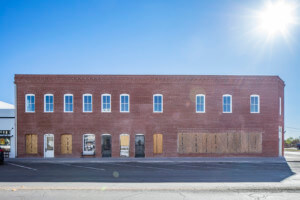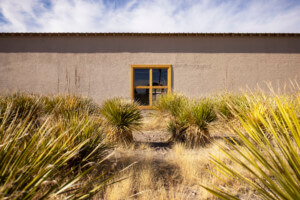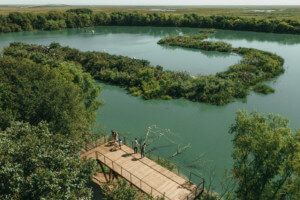The tenth biannual New Practices New York competition exhibition showcases its six winners with an unprecedented amount of diverse projects and approaches. The six firms chosen were Young Projects, Taller Ken, Studio Cadena, STPMJ, Schaum/Shieh, and MODU. The exhibition will be open through July 23.
The firms, which had to be founded after 2006 and located in New York City, were tasked with responding to the theme “Prospect.” “Prospect” was chosen based on the very practical challenges of building in New York: “high costs of living, fierce competition, and minimal profit margins.”
Through their portfolios and projects, the firms addressed heady questions such as: “How are you shaping our practice around the prospect of the future? What are the most important challenges that you see facing the city over the next three months? And in 30 years? What will you focus on? Where are you headed? How will you thrive?”
The exhibition features the firms’ answers through a series of presentations and “wonder boxes.” The boxes were each made to showcase the firms’ ideologies and varied from a literal box to more amorphous projects.
Founded by Gregory Melitonov and Ines Guzman Mendez, Taller KEN is a New York– and Guatemala-based practice. Although Melitonov and Mendez’s latest completed project is the Dean & Dylan Baquet residence in New York, they have a variety of projects in Guatemala and have invited nine young architects from around the world to work on a design-build project with them there. “In order to capitalize on the enthusiasm of young designers just beginning their design careers, we invited them to Guatemala City to produce an intervention that provides a positive, lasting impact on the local community,” they said.
Brooklyn’s Benjamin Cadena founded his eponymous practice in 2013 and has already completed projects in Marfa, Texas, Chicago, Illinois, and Bogotá, Colombia. He still champions New York, however: “The lack of affordability plays a big part in limiting a broader range of people from living in New York City and this needs to be addressed to preserve the vibrancy and dynamism that makes the city interesting in the first place…The city is not dead, but it needs to find ways to attract and nurture a creative ecosystem to remain relevant.”
Although many young firms today are based in multiple cities, Mi Jung Lim and Seung Teak Lee’s South Korea–New York office stands out. “We aim for ‘Provocative Realism’—We design iconic architecture that stands out, not a part, that is visionary, not fantastical.” The firm’s projects, whether in Korea, California, or Kentucky, share a minimalism so precise that it borders on futurism, but with a playful, not cold, aesthetic.
Bryan Young’s design studio in Brooklyn has tackled everything from art and furniture to townhouses in Williamsburg and (most recently) a retreat and spa in the Dominican Republic. But he insists on maintaining work-life balance. “We limit the hours during the work week and we listen to Kanye,” he said, answering how he creates a creative atmosphere that can accommodate his variety of projects.
“In our practice, we attempt to sharpen the conceptual and representational tools to really see and describe the everything-up-until-now,” said Rosalyne Shieh and Troy Schaum in their statement. Each structure feels site-specific: A house in Lexington, Virginia, mimics the rolling Blue Ridge Mountains behind it while the Pop Music Center in Kaohsiung, Taiwan, articulates a varied spatial field as a reaction to the city behind it.
Directed by Phu Hoang and Rachely Rotem, MODU creates installations that are simultaneously artistic and poetic as well as hardcore scientific. Focusing on climate patterns and mathematical models of the weather, MODU creates installations that are “based on a two-way interaction between the public and the environment.” Its most recent project, Cloud Seeing in Holon, Israel, is a lightweight structure with 30,000 balls or “seeds” made from PET plastic from recycled water bottles that move with the wind across the structure’s ceiling. Similarly, the Doppelganger installation in Sydney, Australia, is a “flexing structure” that reacts to its surroundings and the wind to create a “micro-scale public space.”










